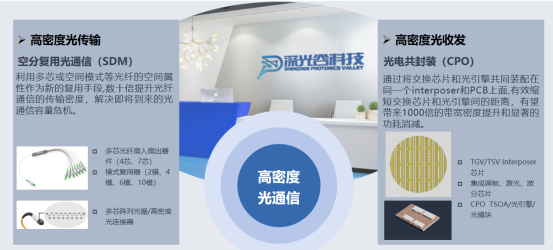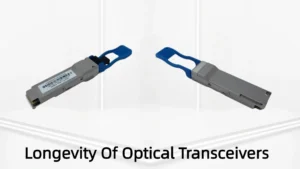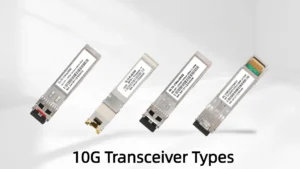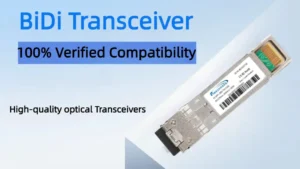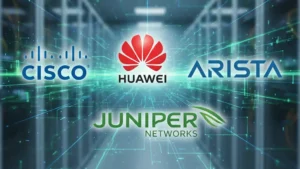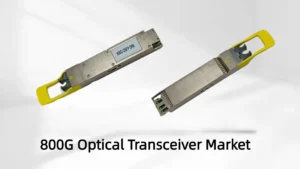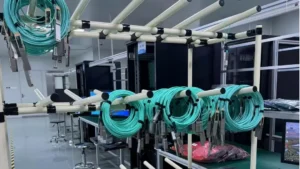Innovations in 3D Optical Waveguide Chip Fabrication
With the rapid development of optical communication technology, multi-core fiber (MCF) is gradually becoming one of the core technologies of the next generation of optical communication systems due to its ability to significantly increase data transmission capacity. It is used in high-end submarine optical cable communications and data centers. Density optical interconnection and other fields. Achieving efficient coupling of multi-core optical fibers and traditional single-core optical fibers has always been a key technology in this field. Especially within ultra-large data centers and computing power centers, the demand for high-density optical connectors is growing day by day, among which many are miniaturized and low-loss. Core coupling chips are considered to be a key means to improve data transmission density and efficiency.
Through continuous independent innovation, Shenzhen Photonics Valley Technology has successfully developed a domestically produced femtosecond laser direct writing device and its optical waveguide processing technology. By precisely controlling processing parameters such as pre-shaped beam, single pulse energy and scanning speed, the company has processed miniaturized, low-loss three-dimensional optical waveguide multi-core fiber coupling chips with controllable cross-sectional morphology, highly symmetrical mode field and high uniformity in boroaluminosilicate glass, established a complete chip production and performance testing platform, and has the ability to mass produce and deliver multi-core coupling chips. The transmission loss of the product is as low as 0.1 dB/cm, and the end face insertion loss is 0.3 dB/face.
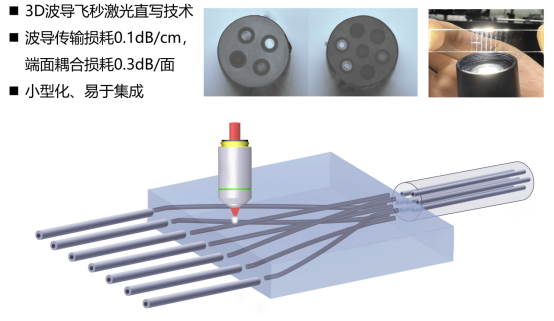
Shenzhen Photonics Valley Technology uses femtosecond laser direct writing technology to mass-produce efficient Fan-in Fan-out (FIFO) multi-core fiber coupling chips, which are mainly used to achieve efficient coupling between multi-core fibers and single-core fibers. This technology shows high flexibility in the layout of waveguide structures, and successfully realizes the miniaturization of fiber arrays, waveguides and multi-core fibers. The end-to-end insertion loss of the device is less than 1 dB. At present, the company has the ability to mass-produce and deliver 4-core/7-core FIFO chips and multi-core fiber couplers in the 1310nm/1550nm band, and supports customer customization (such as 8-core, 19-core and visible light bands, etc.) laser direct writing waveguide chips and device packaging.

In addition, Shenzhen Photonics Valley Technology has successfully completed the production, processing and verification of the first 8-inch wafer-level glass-based TGV Interposer in China, with a bandwidth of 110 GHz, and achieved 2.5D and 3D optoelectronic integrated packaging. The company is committed to combining glass-based optoelectronic interconnection technology with high-density space division multiplexing technology, forming a comprehensive connection in glass laser direct writing optical connectors, multi-core multiplexing FIFO chips, TGV Interposer, etc., giving full play to the advantages of glass-based high-density full-link, and providing efficient solutions for high-speed optical interconnection and optoelectronic integrated systems in data centers and computing power clusters.
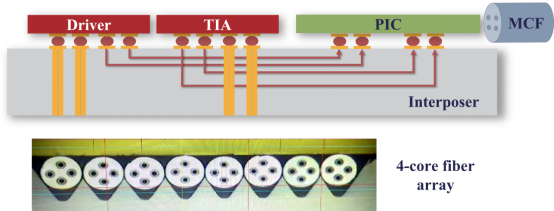
Shenzhen Photonics Valley Technology focuses on the two cutting-edge optical communication technology fields of space division multiplexing and CPO optoelectronic integrated interconnection. Its core products include multi-core fiber fan-in and fan-out chips and devices, mode multiplexing optical chips and devices, CPO optoelectronic integrated interconnection chips and optical engines, etc. The company has dozens of national invention patents, and its innovative achievements have won honors such as the China Patent Excellence Award, China’s Top Ten Optical Advances, and the Ministry of Education Natural Science Award. The company is actively promoting the realization of a new generation of high-speed, high-density data transmission technology, injecting new impetus into the global data communication field, and helping to create a future world of intelligent interconnection.
